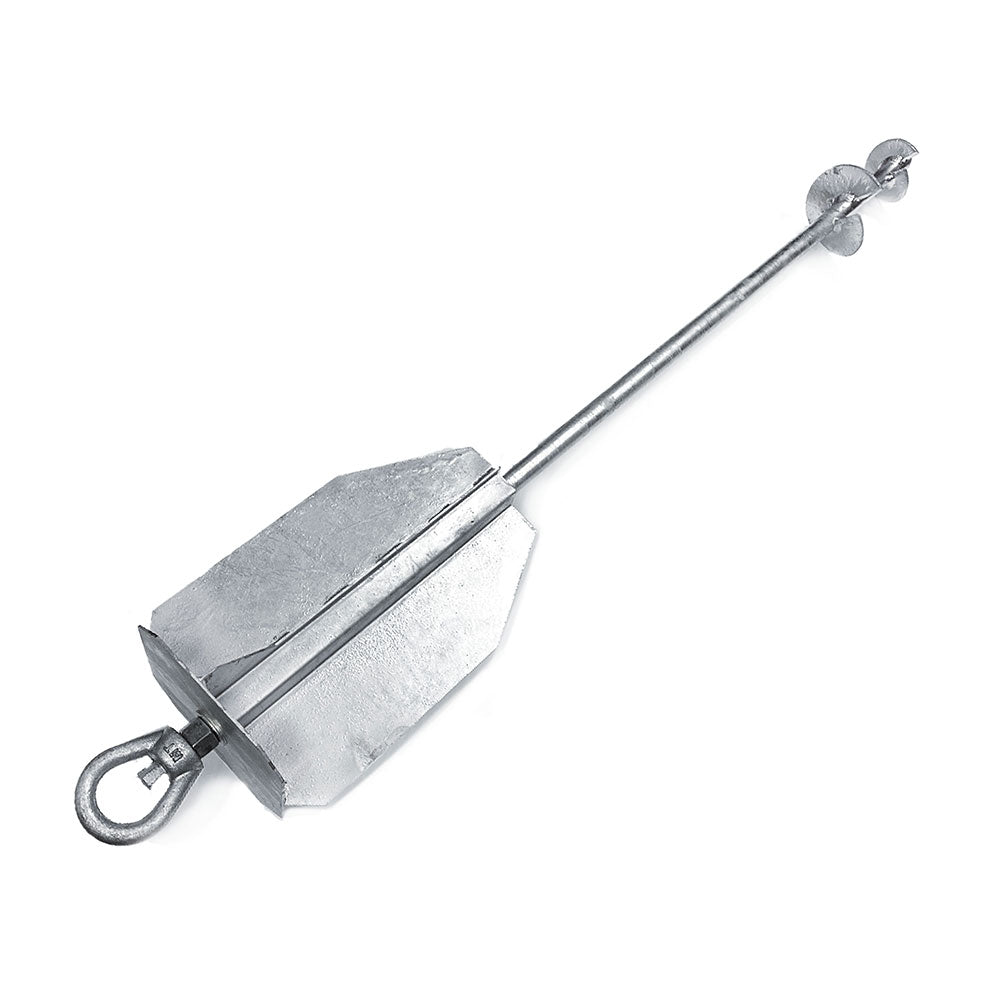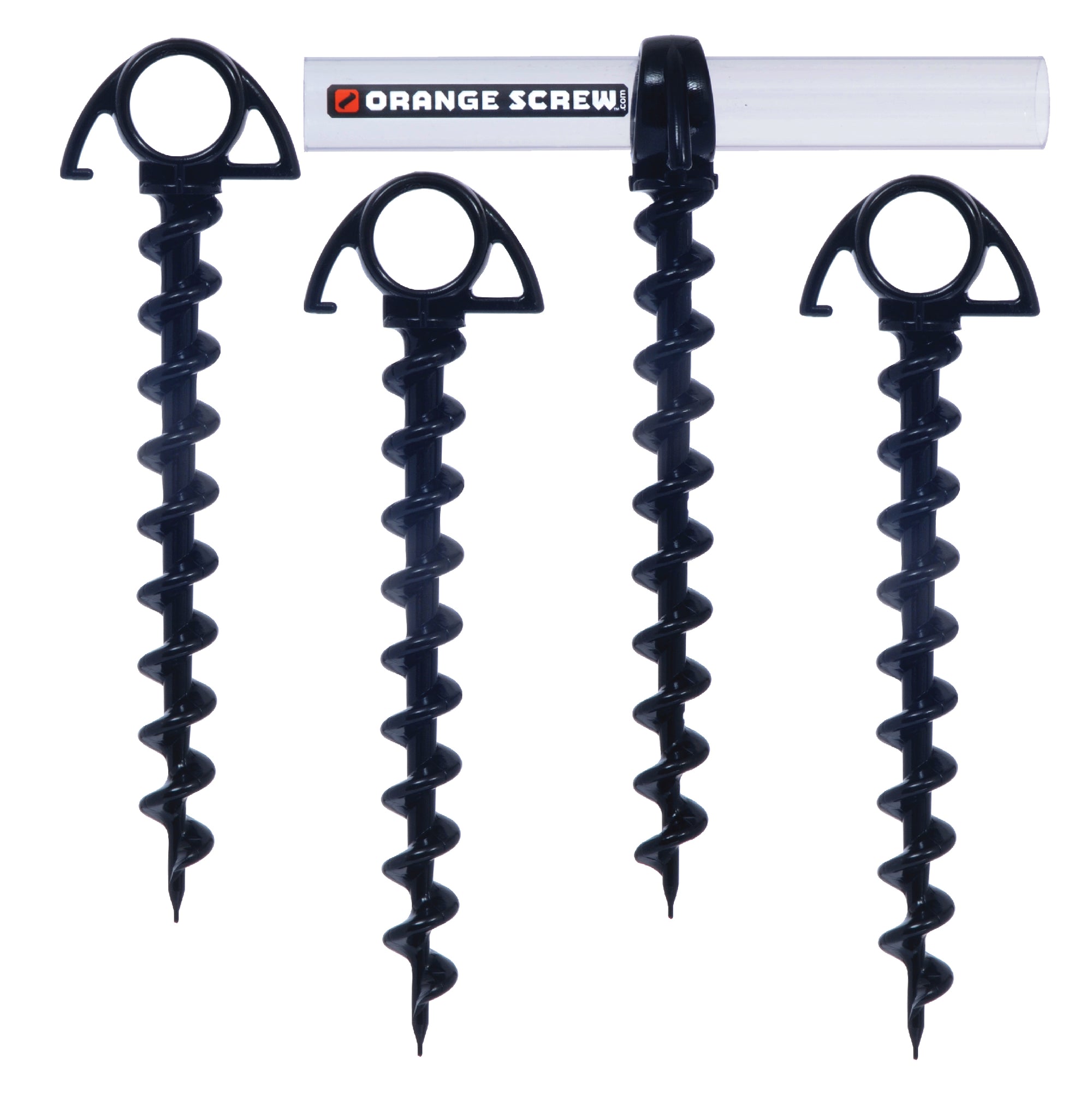The Benefits of a Heavy-Duty Ground Anchor for Maximum Protection
Explore the Different Sorts Of Ground Support for Your Next Project
When embarking on a building and construction or landscaping job, recognizing the numerous kinds of ground supports offered is important to making certain both stability and toughness (Ground Anchor). From auger anchors, which master varied soil conditions, to stake anchors designed for short-lived setups, the alternatives are countless. Additionally, concrete and screw supports existing special advantages in specific situations, while deadman anchors are customized for applications requiring resistance to lateral pressures. The selection of a proper anchor kind can considerably affect the overall success of your task, prompting more exploration into their respective advantages and applications.

Auger Anchors
Auger supports are a prominent choice in numerous building and landscape design tasks due to their unique layout and effective securing capabilities. These anchors include a helical screw-like shaft that is driven into the ground, allowing for a safe and secure hold. The spiral style assists in simple setup and makes best use of resistance versus lateral forces, making auger supports particularly efficient in applications such as secure fencing, momentary frameworks, and disintegration control.
The installation procedure of auger anchors is fairly uncomplicated. Auger anchors can be conveniently removed and recycled, which adds to their cost-effectiveness and sustainability.
Among the substantial advantages of auger supports is their capability to distribute tons uniformly across the bordering soil, reducing the danger of soil disruption and lessening ecological impact. In addition, they are less prone to heaving or loosening in time compared to standard securing techniques. Subsequently, auger supports are a superb selection for projects calling for long lasting and reputable anchoring solutions.

Risk Anchors
When it comes to securing frameworks in a variety of outdoor applications, stake anchors provide a dependable and uncomplicated remedy. These anchors are usually built from sturdy products such as steel or light weight aluminum, made to endure environmental stresses while providing optimal security. Their straightforward layout enables for quick installment, making them an ideal selection for temporary or permanent anchoring requirements.
Risk supports are specifically helpful in safeguarding tents, covers, and various other light-weight frameworks against wind and climate. They work by being driven right into the ground at an angle, producing a solid hold that resists pull-out pressures - Ground Anchor. The efficiency of stake supports depends on numerous aspects, consisting of soil kind, dampness content, and the angle of setup
For added safety and security, many risk anchors feature accessory factors for bands or ropes, permitting tension modifications as required. In applications such as landscape design or building and construction, they can efficiently maintain devices or frameworks on unequal surface. Overall, stake anchors supply a affordable and flexible remedy for protecting numerous outdoor setups, making them a recommended choice for service providers and do it yourself fanatics alike.
Concrete Anchors
Concrete anchors give a robust service for securing frameworks to concrete surface areas, making certain security and safety and security in numerous applications. These supports are essential for tasks varying from domestic constructions to large commercial setups. They are available in different types, consisting of growth anchors, glue anchors, and undercut supports, each developed for details lots demands and ecological conditions.
When mounted,Development anchors depend on mechanical devices to grip the concrete. They are excellent for medium to heavy-duty applications. Glue anchors use high-strength epoxy or resin to bond the anchor to the concrete, providing premium load-bearing capabilities, especially in fractured concrete situations. Undercut supports create a special form within the concrete, supplying phenomenal holding power, especially in applications where tensile lots are widespread.
Picking the suitable concrete anchor involves taking into consideration variables such as the weight of the load, the condition of the concrete, and environmental problems. Proper setup methods are essential to guarantee ideal performance and integrity. When performed appropriately, concrete supports substantially enhance the architectural integrity of numerous projects, making them crucial in contemporary building techniques. Comprehending the specific requirements of your project will aid in selecting the right kind of concrete anchor for the task.
Screw Anchors

Screw anchors are a flexible fastening remedy that can be efficiently used in a variety of applications where conventional concrete supports might not be enough. These anchors consist of a helical style that enables them to be conveniently driven into the ground, making them perfect for usage in soil and various other substratums. Their distinct framework provides exceptional holding power and resistance to pull-out pressures, making them ideal for many projects, from landscaping to structural assistance.
One of the main advantages of screw supports is their convenience of setup. They call for very little tools and can often be mounted without the requirement for excavation, which conserves both time and labor expenses. In addition, screw supports can be eliminated and recycled, supplying a sustainable option for short-lived applications.
Screw anchors are specifically valuable in locations where soil conditions are challenging, such as sandy or loose dirts. Their capability to be installed at differing midsts permits for customization based upon specific job needs. Overall, screw anchors give a reputable and effective securing method, making them an outstanding choice for designers and service providers looking for effective solutions for their jobs.
Deadman Anchors
Deadman supports act as a durable service for maintaining frameworks in tough problems, particularly where traditional securing approaches might fail. These supports consist of large, hefty objects hidden underground, which develop resistance versus side forces. The layout usually involves a straight element, such as a block of concrete or a metal plate, hidden in the soil, to which bands or cables are connected.
The effectiveness of deadman supports hinges on their capacity to distribute loads over a bigger location, reducing the threat of failure in unsteady soil problems. They are especially beneficial in applications such investigate this site as keeping walls, temporary frameworks, and incline stabilization, where dirt activity can jeopardize the stability of the framework.
Installment of deadman supports needs mindful planning to guarantee they are put at the correct deepness and orientation, maximizing their load-bearing capacity. While they might need more labor and material than light-weight anchors, their dependability in unfavorable conditions makes them vital have a peek at these guys for long-lasting jobs. Furthermore, deadman anchors are versatile and can be adjusted to numerous applications, making them a go-to option for designers facing distinct difficulties in their jobs.
Final Thought
In summary, selecting the ideal kind of ground anchor is vital for guaranteeing stability and safety and security in various projects. Auger anchors master diverse dirt conditions, while stake supports fit short-lived applications. For concrete surface areas, expansion and glue anchors supply reputable choices, and screw anchors recommended you read supply versatility in challenging surfaces. Deadman anchors are especially reliable in withstanding lateral forces for retaining walls. Cautious factor to consider of these options will improve job results and structural stability.
Additionally, concrete and screw supports present special benefits in details circumstances, while deadman supports are tailored for applications needing resistance to lateral forces - Ground Anchor.Auger anchors are a preferred option in numerous building and landscaping jobs due to their distinct design and effective securing abilities. They come in different kinds, including development supports, sticky anchors, and undercut supports, each designed for specific tons demands and environmental conditions
Adhesive supports utilize high-strength epoxy or resin to bond the support to the concrete, providing exceptional load-bearing abilities, especially in broken concrete scenarios. In general, screw anchors provide a reliable and reputable anchoring technique, making them an outstanding choice for specialists and engineers seeking effective remedies for their jobs.